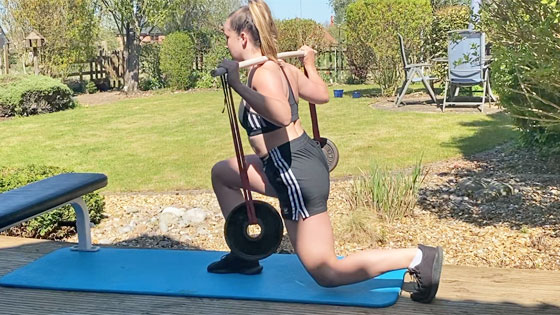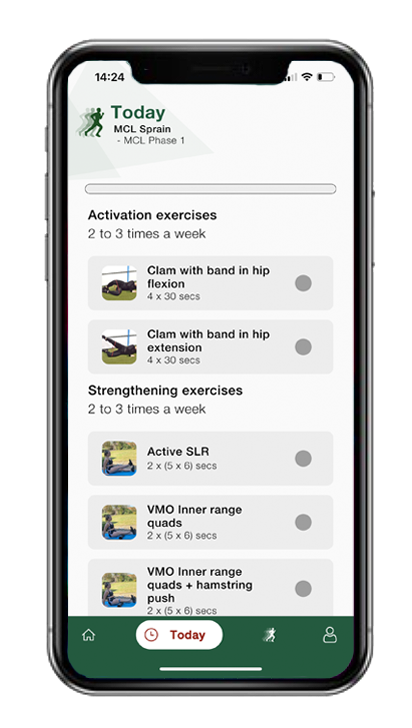Plantar Fasciitis Rehabilitation
By Phil Pask
A step-by-step rehabilitation program for acute and chronic Plantar Fasciitis heel pain. Criteria-based, we take you from initial injury to full competition fitness.
It is based on what Phil would do with his elite Internation players but adapted for use by anyone. Progress through 5 phases at your own pace, meeting specific criteria before moving on.
Available on:
Suitable for:
Plantar fasciitis heel pain
Level
From beginner to elite level
Time required:
10 – 30 mins daily
Play Trailer
Recover even stronger!
We don’t just aim to heal your injury with this program but enable you to come back even stronger than before.
We include mobility & stretching, strengthening, movement control, functional and activation exercises to prevent loss of fitness and function whilst recovering.
It is also suitable for those who may have recovered from Plantar fasciitis but wish to go further with their rehab to help prevent future injuries.

What’s included?
Treatment & healing
This covers how and when to apply treatment such as cold therapy & compression, heat, massage, and taping.
Exercises
Over 60 different exercises with video demonstrations covering mobility & stretching, activation, strengthening, motion control/proprioception, and functional.
Expert guidance
Throughout the program, Phil explains the aims of each phase and where you need to be before you can progress onto the next level.
Priority support
If you have any questions about the program or your progress then get in touch with our qualified sports therapist for advice.
Meet the program physiotherapist
Phil Pask
Phil is one of the World’s most experienced Sports Physiotherapists. He has been England Senior Rugby Team Physiotherapist since 1997, continuing his role in recent years as Consultant Physio to the team.
He was a player, physio, and head of performance at Northampton Saints from 1986 – 2002.

Program content & structure
The program consists of 4 phases and a 5th injury prevention/mitigation phase:
Introduction
Before you start it is important to determine your risk of exacerbating your symptoms and how much you should rest or ‘offload’ your foot in the early stages.
This will depend on how long you have experienced symptoms, how painful your foot is, and how long you experience early morning soreness or pain.
Phase 1
This is the acute phase where the aim is to protect your foot, reduce pain and inflammation.
Work through the tasks then take the progress check when you think you are ready to move on to phase 2.
Phase 2
The aim of phase 2 is to eliminate pain and allow a normal gait or walking pattern with minimal discomfort.
By now your early morning soreness will be diminished.
Phase 3
Although by now you will be feeling pretty good, it is important to complete this phase. The idea in phase 3 is to progress from high to low loading of your foot.
Phase 4
By the end of this phase, you should have no early morning stiffness and be pain-free.
You will be running at close to 100% maximum speed and introducing more complex agility drills.
Phase 5
Phase 5 is the maintenance or ‘injury mitigation’ phase. It is designed to help prevent your injury from returning.
You will select exercises from phases 3 and 4 to integrate as part of your normal training routine.


